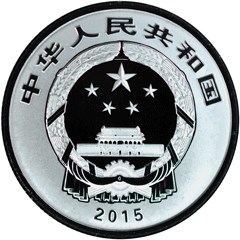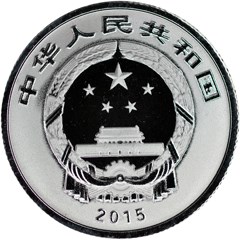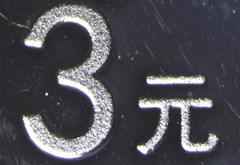Counterfeit Detection: 2015 Chinese New Year Silver 3 Yuan
Posted on 7/12/2016
NGC graders frequently identify counterfeit coins in submissions. These fakes are usually vintage coins, but NGC has seen an increasing number of spurious modern coins. This increase coincides with the massive growth in the popularity of modern coins around the world.
This Chinese Silver 3 Yuan, issued in 2015 to commemorate the Chinese New Year, is a recent example of a fake modern coin identified by NGC. Counterfeiters took note of the significant collector interest in the 2015 Chinese New Year Silver 3 Yuan, which had a mintage of only 600,000 pieces and quickly sold out. This popularity made the coin an ideal target.
At first glance, this counterfeit closely resembles a genuine example (shown at left). A closer look, however, reveals a lack of details, especially in the temple and wreath on the date side. Even more importantly, there is severe granularity across the surfaces—something you would not expect to see on an authentic coin. For example, compare the date on a genuine piece and the forgery:
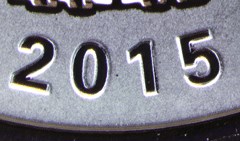 |
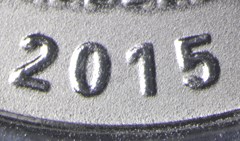 |
| Close up of date on 2015 Chinese New Year Silver 3 Yuan, genuine (left) and counterfeit (right) Click images to enlarge. |
|
When you examine the coin under magnification, the counterfeit does not look all that good. The date is extremely soft and, instead of being mirrored, it is covered in pock marks and porosity. This particular counterfeit seems to be a die transfer fake, which means a genuine coin was used to make false dies. However, the methods used by the counterfeit to transfer the design elements clearly caused a number of microscopic issues.
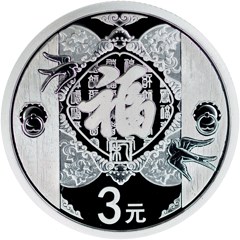 |
 |
| Design side of the 2015 Chinese New Year Silver 3 Yuan, genuine with frost (left) and counterfeit without frost (right) Click images to enlarge. |
|
The same issues are seen on the design side, along with some die polishing errors. Much of the frost is missing on the fake; on the genuine piece, the areas behind the flowers have a light frosted finish, while on the fake they are completely black. Additionally, when you zoom in on the fine details, there is once again heavy porosity throughout.
China is known for making high quality modern coins. When buying newly issued modern coins, make sure to look very closely at the coin rather than simply a cursory glance. Most fakes are easily identified due to their poor details and differences in overall quality. As always, coins graded and encapsulated by NGC are guaranteed to be authentic.
Interested in more Counterfeit Detection articles, click here.
Stay Informed
Want news like this delivered to your inbox once a month? Subscribe to the free NGC eNewsletter today!
